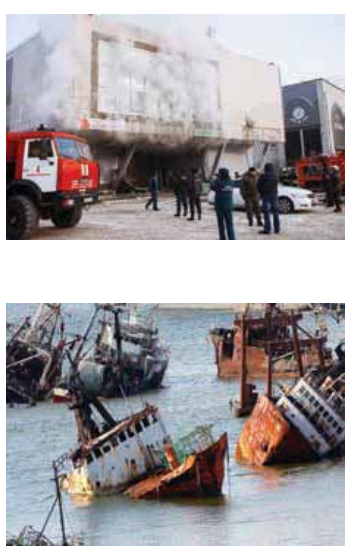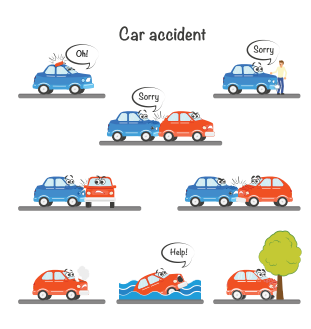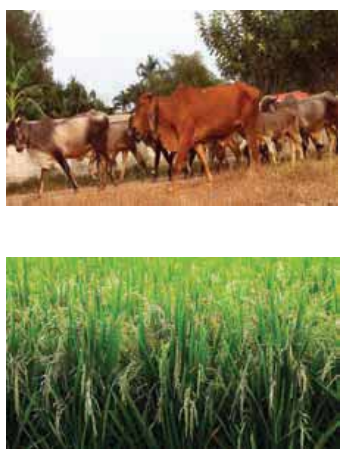Chapter: 11th Commerce : Chapter 15 : Insurance
Types of Insurance
Types of Insurance
Insurance covers different types of
risks. All contracts of insurance can be broadly classified as follows:
1.
Life Insurance (or) Life Assurance
2.
Non-life Insurance (or) General
Insurance
It can be further classified into: (i)
Fire Insurance; (ii) Marine Insurance; (iii) Health Insurance and (iv)
Miscellaneous Insurance.
1. Life Insurance
Life Insurance may be defined as a
contract in which the insurance company called insurer undertakes to insure the
life of a person called assured in exchange of a sum of money called premium
which may be paid in one lump sum or monthly, quarterly, half yearly or yearly
and promises to pay a certain sum of money either on the death of the assured
or on expiry of certain period.
Importance
of Life Insurance
a.
Life insurance provides protection to
the family at premature death of an individual.
b.
It gives adequate amount at an old age
when earning capacities are reduced.
c.
Life insurance is not only a protection
but is a sort of investment because a certain sum is returnable to the assured
at the time of death or at the expiry of a certain period.
Types
of Life Insurance Policies
Life insurance policies are of many
kinds. Some of them are given below:
i.
Whole Life Policy
In this kind of policy, the sum insured
is payable only on the death of the assured
to the beneficiaries or heir of the deceased. The premium is payable for
a fixed period (20 or 30 years) or for the whole life of the assured. If the
premium is payable for a fixed period, the policy will continue till the death
of the assured.
ii.
Endowment Life Assurance Policy
Under this type of policy, the insurer
undertakes to pay the assured a specified sum, on the attainment of a particular age or on his death, whichever is earlier. In
case of death of the
assured before he attains the specified age, the sum is
payable to his legal heir or the nominee. Otherwise, the sum is paid to the
assured, when he attains a particular age. Thus, the endowment policy matures
after a limited number of years.
iii.
Joint Life Policy (JLP)
The policy is taken up jointly on the
lives of two or more persons is known as Joint Life Policy. On the death of any
one person, the assured sum or policy money is paid to the other survivor or survivors. The
premium is paid jointly or by either of them in installments or lump sum.
Usually this policy is taken up by
husband and wife jointly or by two partners in a partnership firm, where the
amount is payable to the survivor on the death of either of the two.
iv.
Annuity Policy
Under this policy, the assured sum or
policy money is payable in monthly or annual instalments after the assured
attains a certain age. In this case, either the whole amount of the premium is
paid once or premium is paid in instalments over a certain period. This policy
is useful to those who prefer a regular income after a certain age.
v.
Children’s Endowment Policy
This policy is taken to provide funds for the education or marriage of children. For example, Jeevan Anurag Policy. In this policy, the amount is payable by the insurer when the children attain a particular age. The premium is paid by the person entering into the contract. However, no premium will be paid, if he/she dies before the maturity of the policy.

2. Non – Life Insurance
It refers as the insurance not related
to human but related to properties.
a.
Fire Insurance
Fire insurance is a contract whereby the
insurer, in consideration of the premium paid, undertakes to make good any loss
or damage caused by a fire during a specified period upto the amount specified
in the policy.
A claim for loss by fire must satisfy
the following two conditions:
·
There must be actual loss; and
·
Fire must be accidental and non-
intentional.
Essential elements of Fire Insurance
Contract
·
The insured must have insurable interest
both at the time of insurance and at the time of loss.
·
The contract is based on the principle
of utmost good faith.
·
It is based on the principle of strict
indemnity.
·
Fire must be the proximate cause of
damage or loss.
b.
Marine Insurance
Marine insurance is a contract of
insurance under which the insurer undertakes to indemnify the insured in the
manner and to the extent thereby agreed
against marine losses. The insured pays the premium in consideration of the
insurer’s (underwriter’s) guarantee to make good the losses arising from marine
perils or perils of the sea.
Marine perils can be collision of ship
with the rock, fire, ship attacked by the enemies, etc. These perils cause
damage, destruction or disappearance of the ship and cargo and non-payment of
freight. Through marine insurance policy, the insurer undertakes to compensate
the owner of a ship or cargo for complete or partial loss at sea.
Essential elements of Marine Insurance
Contract
·
It is based on the principle of
indemnity
·
The contract is based on utmost good
faith.
·
The insurable interest must exist at the
time of loss.
·
The principle proximate cause will apply
to marine loss only.
Types of Marine Insurance Policies
The three different types of marine
insurance policies are:
1. Hull or Ship Insurance:
When a ship is insured against any type
of danger, it is known as hull insurance. This policy is taken to indemnify the
insured for losses caused by damage to ship.
2. Cargo Insurance:
When a marine insurance policy is taken
by the cargo owner to be compensated for loss caused to his cargo during the
Voyage, it is known as cargo insurance. The cargo to be transported by ship is
subject to many risks, like risk of theft, loss of goods in voyage, etc.
3. Freight Insurance:
When a marine insurance policy is taken
to guard against non-recovery of freight, it is known as freight insurance. The
shipping company is mainly interested in freight, which it gets either in
advance or on the arrival of goods. However, it will not get the freight, if
the goods are lost during transit. So, to insure the freight, it takes freight
insurance.
A contract of marine insurance covers
the ship, cargo and the freight.
C. Health Insurance
In mid 80’s, most of the hospitals in
India were government owned and treatment was free of cost. With the advent of
Private Medical Care, the need for Health Insurance was felt and various
Insurance Companies introduced Health Insurance as a Product. Presently the
health insurance exists primarily in the form of ‘Mediclaim policy’.
Health insurance policy is a contract
between an insurer
and an individual or group, in which the insurer
agrees to provide specified health insurance at an agreed upon price
(premium).Disability resulting from illness or accident may be peril to family
because it not only cuts off income but also creates large medical
expenses. Health insurance is taken as safeguard against rising medical costs.
It provides risk coverage against unforeseen health expenditure that may result
in financial hardship.
Types of Health Insurance
There are mainly three types of Health
Insurance covers:
1. Individual Mediclaim
It covers the hospitalization expenses
for an individual up to the sum assured limit
2. Family Floater Policy
It covers the hospitalization expenses
for entire family up to the sum assured limit.
3. Unit Linked Health Plans
This policy combines health insurance
with investment and pays back an amount at the end of the insurance terms.
Health Insurance provides following
types of coverage:
Medical expenses – It covers the
expenses of hospitalization/nursing home bills and doctors’ services.
Disability income – It replaces the
income lost while the insured is unable to work.
claims
Settlement

There are two ways by which health
insurance claims are settled:
a.
Cashless: The claim amount needs to be approved by the TPA
and the hospital settles the amount with the TPA. (TPA or Third Party
Administrator is a middleman between Insurer and the Customer)
b.
Reimbursement: The insured avails himself or herslef
of the treatment and settles the hospital bills
directly at the hospital. The insured can claim reimbursement later on by
submitting relevant bills/documents for the claimed amount to the TPA
D.
Miscellaneous Insurance
i. Motor Vehicle Insurance
This is also known as ‘Auto Insurance’.
This policy comes under General Insurance. This insurance has become very
popular and is gaining importance. In motor insurance the owner’s liability to
compensate people who were killed or injured through an accident is passed on
to the insurance company. The premium rate under this policy
is standardized.
ii. Burglary Insurance
This policy comes under the category of
insurance of property. Any loss of damage due to theft, larceny, burglary,
house- breaking and acts of such nature are covered by this policy.
Compensation of actual loss is done.
·
Insurable interest need not exist at the
time of policy but should be present at the time of theft.
·
The principle of causa proxima is also
applied to it. The insurance company would pay only if the proximate cause
falls under the policy
iii. Cattle Insurance
This is a bond in which a sum of money
is secured to the insured in case of an event of death of animals like bulls,
buffaloes, cows and heifers. The cause of death may be an accident, disease or
pregnant condition, etc. The insurer normally agrees to pay excess in case of
loss.

iv. Crop Insurance
This policy is to provide financial
support to farmers in case of a crop failure due to drought or flood. It
generally covers all risks of loss or damages relating to production of rice,
wheat, millets, oil seeds and pulses etc.
v. Sports Insurance
This policy is a comprehensive cover for
amateur sports persons regarding their sporting equipment, personal effects,
legal liability and personal accident risks. If desired it can also be extended
to a named member of the insured’s family but it is not available to
professional sports person. The cover is generally for following sports or
more: Angling, badminton, cricket, golf, lawn tennis, squash and use of
sporting guns.
vi. Amartya Sen SikshaYojana
The General Insurance Company offers to
secure the education of dependent children under this policy. If the assured
parent/legal guardian goes through any bodily injury resulting solely and
directly from accident due to external, violent and visible means
and if such injury shall within twelve calendar months of its occurrences be
the only direct cause of his/her death or permanent total disablement, the
insurer shall indemnify the insured student in respect of all covered expenses
to be incurred from the date of occurrence of such accident till the expiry of
policy or completion of the duration of covered course whichever occurs first
and such indemnity shall not exceed the sum assured as stated in the policy
schedule.
vii. Rajeswari Mahila Kalyan Bima Yojana
This policy envisages to provide relief
to the family members of insured women in case of their death or disablement
due to any kinds of accidents and/or death and / or disablement arising out of other factors
incidental to women only.
Terms used in Insurance
i. Nomination
According to Sec 39 of
the Insurance Act, 1938, nomination is the process of
appointing or nominating a person or persons by the insured, to receive the
payment of the policy, in the event of death. The person who is authorized to
receive the payment of the policy is called nominee. If the policy matures by
expiry of time, the policy amount is payable to the insured himself and not to
the nominee.
ii. Surrender Value
The surrender value is the cash value of
the policy which is payable to policyholder if he decides to terminate the
contract. This surrender value is usually obtained from the
paid-up-valuebyapplyingapercentagefactor. This percentage factor will vary
according to the plan of assurance, the original term of the policy and the duration
elapsed since the commencement of the policy. The surrender value signifies the
amount of premiums paid which is returned to the policyholder at the time of
surrendering the policy.
iii. Re-Insurance
It is a contract of insurance, in which
an insurer enters into a contract with another insurer to insure the whole or a
part of risk covered by the first insurer. It happens when an insurance company
feels that it cannot bear the entire risk alone by itself. In such case, it
transfers a part of the risk to other insurance companies.
iv. Double Insurance
When more than one insurance policy is
taken to cover the same subject matter i.e. risk, then it is known as Double
Insurance.
Related Topics